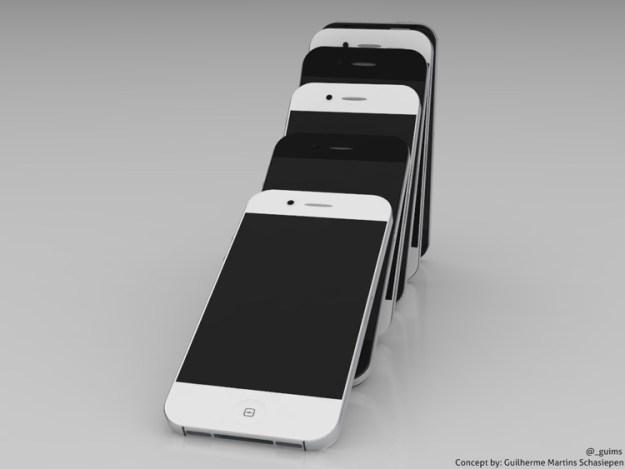
Apple has yet to confirm a single detail about its next-generation iPhone, but reports out of Taiwan suggest the company believes it’s going to be a hit.
According to Apple supply chain sources, production of Apple’s so-called iPhone 5 at Foxconn Electronics plants have ramped up to about 150,000 units per day, reports DigiTimes. In addition, lens maker Largan Precision, touch-screen maker TPK Holding, glass supplier G-Tech Optoelectronics and battery suppliers Simplo and Dynapack are all currently operating at maximum capacity, the sources said.
With this level of production, iPhone 5 shipments are expected to reach between 5 million and 6 million in September, which equals out to more than 22 million units for the fourth quarter of this year. Shipments of iPhone 4 (both GSM and CDMA versions) will drop to make room for iPhone 5.
Of course, it is still not known when Apple plans to announce the iPhone 5, let alone when anxious customers will be able to get their hands on one. General consensus of the iPhone 5 rumor mill is that the next-generation Apple handset will launch sometime in October, though it’s possible Apple will make an announcement about the device this month — a prospect that grows increasingly unlikely as the days roll on.
An October iPhone 5 launch has become so commonplace, in fact, that some reputable outlets (like AllThingsD, for example) refer to the time frame as if its been set in stone by Steve Jobs himself (or maybe Tim Cook).
Other rumors that are beginning to appear more sure include iPhone 5 coming packed with an A5 processor (possibly dual-core), and include an 8 megapixel camera. It’s also likely that the iPhone 5 will have an edge-to-edge screen, a thinner profile, and be compatible with both GSM (AT&T) and CDMA (Verizon) radio signals. Sprint, which uses CDMA, could be added to the list of carriers in the US.
In addition, we were told recently by a Verizon representative that the iPhone 5 “will be 4G,” which is as much of a confirmation as we’ve seen that the next iPhone will have that capability.
Editors' Recommendations
- An Apple insider just revealed how iOS 18’s AI features will work
- 5 phones you should buy instead of the iPhone 15
- iPhone 16: news, rumored price, release date, and more
- iPhone SE 4: news, rumored price, release date, and more
- 3 reasons why I’ll actually use Anker’s new iPhone power bank


